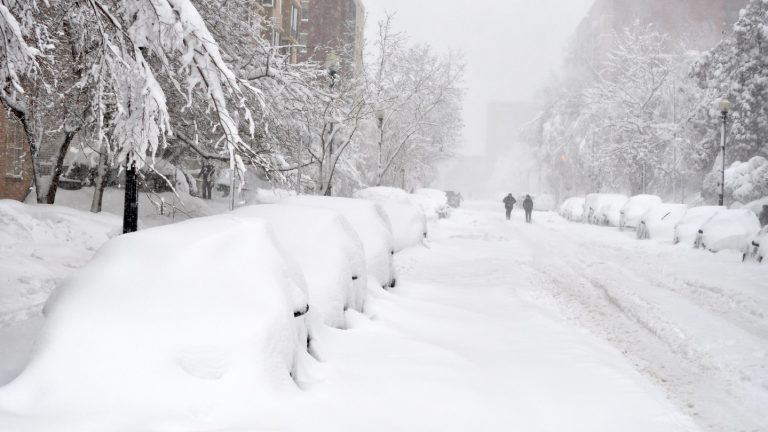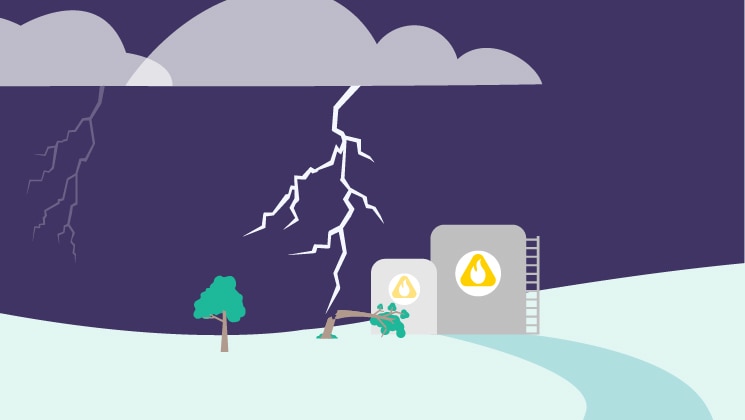
In 2021, the U.S. experienced 20 severe weather events that totaled more than $152 billion in damages. These events can devastate communities, and not just in the immediate aftermath. Water and air pollution, mold, property damage, construction delays, and other factors can have lasting consequences on community and business development for months and years afterward.
However, there are actions companies can take to help address these exposures. Learn more about the potential environmental impacts of severe weather, along with best practices to prepare for—and recover from—extreme weather events.
Mitigating mold exposure and safety risks
Any situation in which water penetrates wood framing, drywall, insulation, and other structural materials creates an environment where mold and bacteria can thrive. In the aftermath of a severe weather event—particularly moisture-laden storms—mold contamination is a top concern.
Absent swift remediation to dry and dehumidify impacted areas, businesses could face a costly and technical process to remove and replace unsalvageable materials. The exposures aren’t limited to the physical structure, either.
Mold exposure is a health hazard. If businesses fail to follow proper protocols to address mold growth after an event, their employees and customers could experience health problems, which can lead to bodily injury claims.
Protecting against storage tank damage and pollutant releases
Storms push our infrastructure to its limits—sometimes with disastrous consequences. Hurricanes, for example, often produce millions of tons of toxic debris and waste, including waterlogged wood, drywall, plaster, and electronics, which can deteriorate and release hazardous chemicals into the environment. Additionally, storms can cause release of oil from tanks, as well as other toxic chemicals.
Pollutant releases from storage tank leaks is another significant risk for businesses after a weather event that frequently gets overlooked. Even small-scale leaks can be disastrous for communities, including leaks in saltwater disposal wells, agricultural waste leaks during floods, and leaks from damaged pipes and valves after an extreme freeze. Lightning strikes can cause ruptures in storage tanks, which often lead to fires.
In addition to cleanup costs, companies that aren’t prepared for severe weather events may face environmental liability claims due to damage to the water supply, as well as local plant and animal life.
Preparing for business continuity in an uncertain environment
Although businesses often feel pressure to reopen quickly after a disaster, it’s important to consider both the shorter-term dependencies, which can constrain recovery efforts, as well as the longer-term environmental impact. The systemic nature of severe weather events can prevent businesses from recovering as quickly as they would like. For example, in the immediate aftermath of a storm, snarled supply chains, prolonged power outages, and shortage of labor can impede recovery efforts. Your business may be one of several in need of specialized service providers and remediation assets.
In the longer term, threats like mold and pollutants released into the water and atmosphere can generate long-tail health and structural risks, which may not be experienced immediately. Taking precautionary steps before an event occurs, as well as implementing a plan following an event, can help reduce your recovery costs and ensure your customers and employees are as safe as possible.
Consider the following mitigation actions to help your business reduce the risk of environmental claims after a severe weather event:
- Review the Environmental Protection Agency’s resources on commercial operation mold cleanup and remediation.
- Develop a comprehensive water intrusion protocol and mold maintenance plan that includes detailed checklists for monitoring and responding to mold issues.
- Designate employees who are responsible for implementing the plan.
- Identify predesignated service providers to help with mold remediation and waste cleanup.
- Identify a plan for backup power.
- Review where storage tanks are located and protect them with adequate secondary containment. Perform routine maintenance and inspections.
- Consider environmental insurance coverage, which can help cover the adverse financial impact of mold and other pollutants.
During these recovery periods, insurance providers are an invaluable asset to help businesses evaluate environmental risks and choose the best path forward. We offer specialized environmental coverage and risk-management expertise that can help businesses mitigate environmental risk. Learn more about our comprehensive environmental liability solutions.
Related insights
This website is general in nature, and is provided as a courtesy to you. Information is accurate to the best of Liberty Mutual’s knowledge, but companies and individuals should not rely on it to prevent and mitigate all risks as an explanation of coverage or benefits under an insurance policy. Consult your professional advisor regarding your particular facts and circumstance. By citing external authorities or linking to other websites, Liberty Mutual is not endorsing them.



